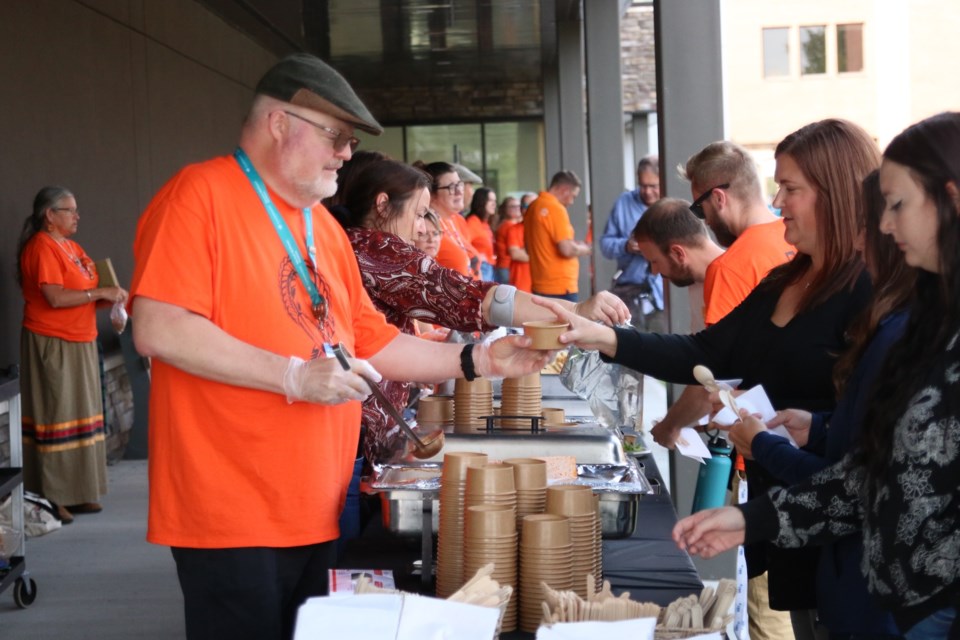THUNDER BAY - As a post-secondary institution that serves students from across the region and the world, teaching Indigenous history, culture, and the core elements of truth and reconciliation has become a policy that encompasses all of Confederation College.
“It’s critical. We at Confederation College have been on this journey for a long time,” said Confederation College president Michelle Salo. “We get new students every year and they need to understand how important reconciliation is to the college.”
On Friday, the college hosted a welcome back feast for students and staff to launch a week of programming that will culminate with Truth and Reconciliation Day on September 30.
Salo said the college has undertaken numerous changes in recent years, including implementing an Indigenous reconciliation action plan and the development of seven Indigenous learning outcomes to be embedded into all programs.
“This is extremely important,” Salo said.
“It is something that we as a leadership team have to make sure we are behind and that people understand and model what we are doing in a leadership capacity. So for me as president this is extremely important.”
Wendy Landry, vice president of Indigenous leadership, partnerships, and strategies at Confederation College, said as an educational institution, it is a no-brainer to bring staff, faculty, and students together to learn about Indigenous people in Canada.
“And to ensure we have a safe place for Indigenous students and recognize we do have a commitment here at the college to truth and reconciliation,” she said.
Landry added that when she took on the role with the college, she emphasized that it must be an all-hands-on-deck situation and everyone must be committed to making these important changes.
“That commitment to reconciliation and just taking a look at everything from policies, processes, and procedures, to providing a safe space and adding to the cultural environment of the college is something we have all committed to and will put forward some commitments both externally and internally in the future,” Landry said.
“In all the things I do and have done, it’s adding an Indigenous lens to everything, from HR policies and practices, to our physical space and adding physical space. We have the outdoor learning centre that is opening at the end of the month. Just the feeling of the space and the changes that have happened, we have a lot of great things and initiatives.”
And seeing so many students and staff out for the feast on Friday is encouraging to both Salo and Landry who believe the message and commitment is resonating with everyone.
“Last year we had a really great turnout as well, and today having the faculty, staff, and students come out today to understand why we are doing this and why we are doing all the programming for the next month is the whole part of education and I think the fit is there,” Landry said.
“I think there are a lot of Indigenous cultures across the world, not just here in Canada,” Salo added. “So I think students can find similarities with what they have experienced and what our Indigenous people here in Canada have experienced.”
